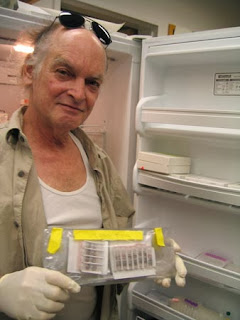This week's topic called Math + Art was about how the development of mathematics has influenced a variety of artists including painters, architects, writers, and more to create their works of art. I found this topic really interesting, because honestly before this day I didn't even think about some of these things. I would have
never thought that math had such a huge influence in art, but it went hand in hand.
It all started with the number zero which was created in Mesopotamia, but at the time only defined as an empty space. Zero as a number appeared from mathematician Brahmagupta who created the rules of the number zero. With the development of arithmetic and the number zero as we moved further in time the Greek and Italian people began to work on the theory of perspective and the vanishing point.
The Golden ratio was created by the Greeks and used to create structures such as the Egyptian pyramids and the Parthenon in Athens. Even the famous Mona Lisa is using the golden ratio in its image. The Vitruvian Man could be considered the perfect collaboration/example of art and science. It's supposed to be the perfect proportion of a human man. I found "Flatland" by Edward Abbott to be a very interesting story and felt like in a way it described an early artist's view on the progression of mathematics and art. The artist painted the world as an expression of shapes and lines and the square discovered that there were so many more dimensions and shapes than he previously comprehended, but he wasn't allowed to share his ideas and was imprisoned for trying. I felt like a lot artists had avante-garde ideas that were very unappreciated in their times only to be called genius a few centuries later. Mathematics working together with art? Who would have thought a correlation even existed?
These ideas of mathematics and proportion influenced a generation of artists for years to come. Piet Mondrian a very famous painter in 1942 used mathematics and logic to create art showing that anything could be created using basic geometric shapes. Charles Jeanneret used the golden ratio, the Fibonacci numbers, and proportions of the human body to make his architecture better pieces of structural art. In even more recent works, Dan Brown's The Da Vinci Code, a literary piece of art, was based on the proportional and mathematical work of Leonardo Da Vinci as well as the Fibonacci numbers.The long-running television show Numb3rs was based on a genius using mathematics to solve crimes.
The juxtaposition of art and math was something that never previously occurred to me and it makes me wonder what other connections I've failed to make. This week's class really opened up my mind into the world of art, and I'm definitely going to be looking at future art pieces with a mathematically inclined eye.
Citations:
Abbott, Edwin Abbott. Flatland: A Romance of Many Dimensions. New York: Barnes & Noble, 1963. Print.
Da Vinci Vitruve Luc Viatour. Digital image. Wikimedia. Wikipedia, n.d. Web. <http://upload.wikimedia.org/wikipedia/commons/2/22/Da_Vinci_Vitruve_Luc_Viatour.jpg>.
Zero. Digital image. Indiana Public Media. N.p., n.d. Web. <http://indianapublicmedia.org/amomentofscience/files/2011/07/130_zero.jpg>.
Piet Mondrian 3265711. Digital image. Art Education 4 Kids. Weebly, n.d. Web. <http://art-educ4kids.weebly.com/uploads/8/9/6/9/8969100/3265711_orig.jpg>.
McBurney 1. Digital image. Bridges Math Art. N.p., n.d. Web. <http://www.bridgesmathart.org/art-exhibits/jmm09/McBurney1.jpg.jpg>.








































